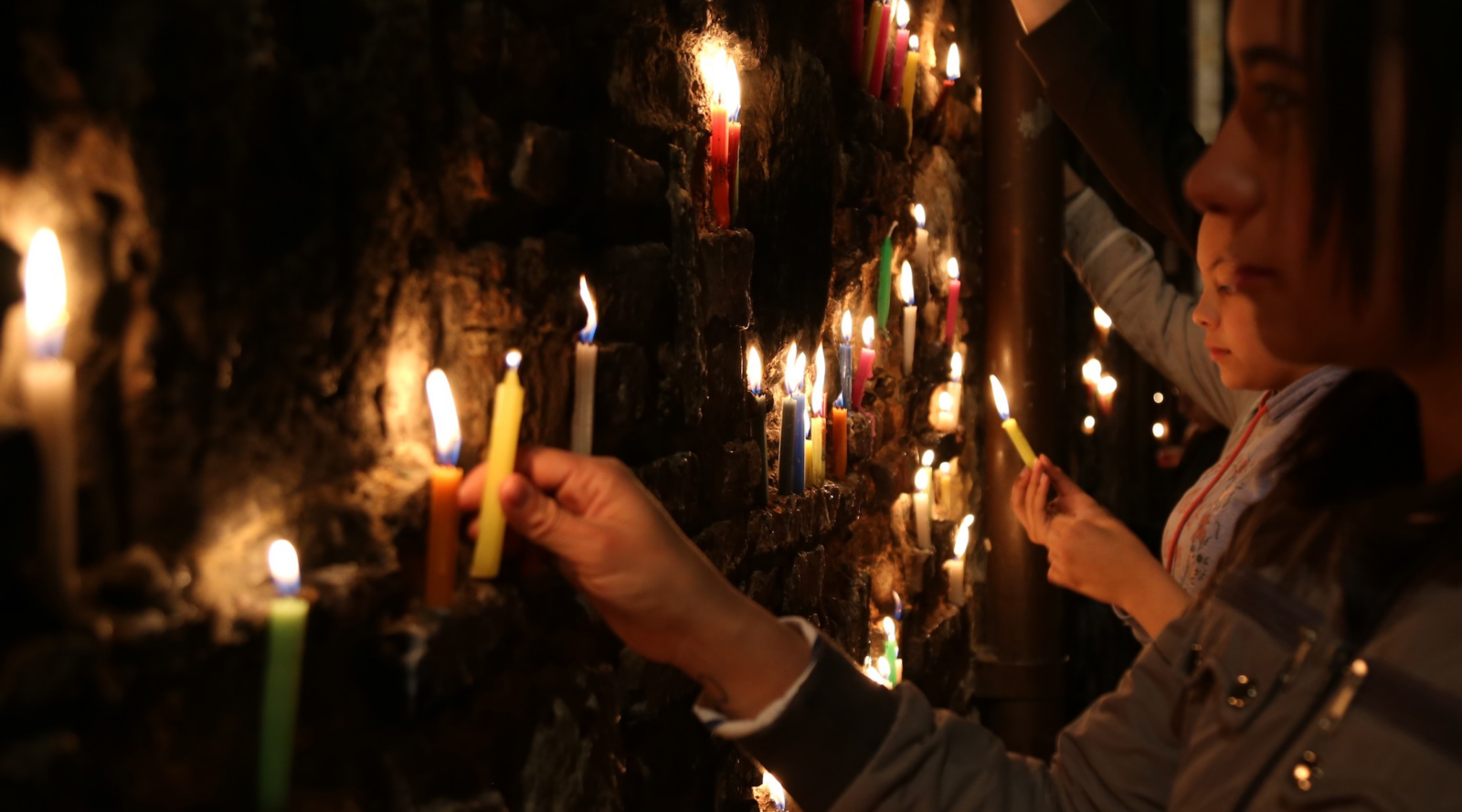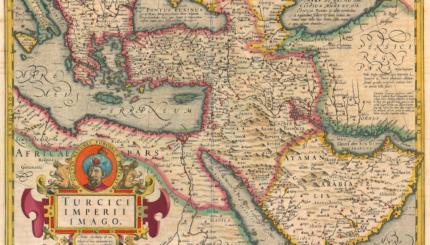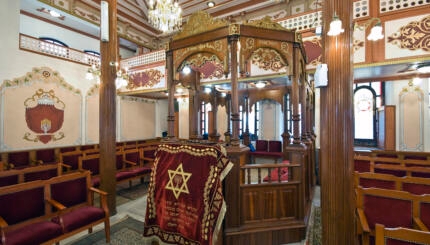Converso, Marrano, New Christian, Catholic, Crypto-Jew: these titles, amongst others, are intermittently applied to the men and women of 15th-17th century Spain and Portugal whose identities lingered somewhere between Jew and Christian. In most cases, multiple labels can be used to describe the same individuals, because the boundaries between their identities were porous. For both contemporary observers and for modern historians, the label used reveals more about the labeler than about the phenomenon described.
Historical Circumstances
For most of the Middle Ages, control of the Iberian Peninsula (the geographic entity comprising modern Spain and Portugal) alternated between Muslim and Christian hands. At times this meant a more tolerant society, from which Jews benefited in kind. By the 14th century, however, as the Christian Reconquista (reconquest) of Spain was in full swing, a crusading spirit permeated most levels of society. Compounded with the fear and desolation of the Black Death in the mid-14th century, the atmosphere was ripe for anti-Jewish sentiment.

A Jew being persecuted in the Spanish Inquisition
Encouraged by a decade-long anti-Jewish campaign by the Sevillian preacher Ferrant Martinez, a rash of popular riots against Jews erupted across the peninsula in the year 1391. By the time the riots subsided, 100,000 Jews were dead, 100,000 had fled the peninsula, and another 100,000 had converted to Christianity. By the year 1415, another 50,000 Jews had converted to Christianity.
Suspicions and Hopes, Labels and Labelers
After the wave of conversions in 1391, three loose groups emerged: Jews who held fast to their faith and religious practice; Jews who converted to Christianity and were absorbed by Christian society; and those who existed outwardly as Christians but practiced Judaism in secret.
With your help, My Jewish Learning can provide endless opportunities for learning, connection and discovery.
To outsiders, secret Jews were indistinguishable from those who had fully converted to Christianity. The titles converso (Spanish for “convert”) or cristianos nuevos (“New Christians”) were thus equally applied to the second and third of these groups–fully devout Christians who were once Jewish, and those secret, or crypto-Jews.
The ambiguities of outward appearances, and the desire to discern the truth behind the mask of the converso, dogged both faithful Jew and hereditary Christian alike. Many Jews, both on the peninsula and in other parts of Europe, considered their brethren to be forced converts, and referred to them as anusim (literally “forced ones”).
Among Christians, a new label was devised to describe those converts to Christianity who were suspected of maintaining their former Jewish practices: marrano. Literally meaning “swine,” this term of opprobrium came to serve as a reference to any sort of crypto-Jewish activity, such as lighting special lamps on Friday night, avoiding forbidden foods, or abstaining from work on the Jewish Sabbath.
Modern descriptions of this phenomenon are faced with similar difficulties in labeling. Both converso and New Christian offer value-neutral designations, since neither presumes to know whether people who behaved as Christians were secretly practicing or believing as Jews. In both Jewish and Spanish historical writing, the term marrano is emptied of any swinish connotation and refers only to the phenomenon of some form of crypto-Judaism or the ambiguities therein. Marrano suggests that an outwardly Catholic persona was really something in disguise–a historical fact that, by its secret nature, was difficult both for contemporaries to identify, and for historians to uncover.
Legal Restrictions: Purity of Blood
Mass conversions introduced a problem for Spanish society. Unlike the sporadic conversion of individuals during the Middle Ages, the entry of a large group into Spanish Christendom created a confusion of categories and demanded new solutions.
Since converts to Christianity were officially free of all legal restrictions that applied to Jews, the introduction of conversos en masse into Spanish society brought with it heavier competition in commercial fields previously closed to these individuals as Jews, and a general sense of resentment by the old population towards this new influx.
An ethnic solution was imposed in a series of statutes first enacted in Toledo in 1449 called limpieza de sangre (purity of blood), which barred men of Jewish descent from holding public office as well as other titles. This new designation of conversos as separated from the main population by blood helped in the formation of a group identity based on ethnicity, even when its religious element was erased.
The threat that converts would revert to their Jewish faith–or “Judaize”–was the motivation for the establishment of the Inquisition in Spain in 1483. In 1492, all practicing Jews were expelled from Spain, since they were viewed as a pernicious influence on New Christians who were at risk for backsliding to Judaism.
Portuguese Varieties
Whereas the Spanish monarchs sought to solve their Jewish problem by expelling all practicing Jews from their country, their counterparts in Portugal took a different approach. Recognizing the important commercial activities of Jews in Portugal, in 1497 King Manuel opted to forcibly baptize all of the Jews in Portugal.
While Spanish conversions often severed the bonds of family and community, the full-scale conversion of Portuguese Jewry meant that the informal networks of Jewish life remained largely intact, even as their institutional organizations disappeared.
Collective Identity: Forging “the Nation”
An ethnic designation of Jewishness, rather than a religious one, was given further impetus by the fact that in Portugal converted Jews served a critical economic function as merchants and traders. This unique role helped create a synonymy between New Christians and so-called homens de negócios (“Men of Affairs”).
As Portuguese Jews established business connections beyond Portugal, this group gained further valence, and the simple designation homens de nação (“Men of the Nation”). This title initially denoted vocation but was soon extended to refer to any and all people of Jewish origin, regardless of their religious activities. Across the European continent, members of the marrano diaspora came to conceive of themselves as linked by ethnicity and nationality.
An Alternative Path to Modernity
The creation of the marranos and the return to Judaism of some in the following centuries, particularly in the Ottoman Empire, Amsterdam, and small settlements in the south of France, offers a different model of understanding Jewish modernity. Unlike their Ashkenazic counterparts, the Sephardic Jews who underwent the marrano experience came to their Judaism with a split between Jewish ethnicity and Jewish religious practice.
The experience of multiple Jewish identities engendered for some a belief in skepticism–doubt regarding any and all particular religious principles and practice–most famously in the case of Baruch/Benedict Spinoza. The crucible of crypto-Judaism had formed a Jewish identity that was less than the full complement of religious ideals, and at the same time, a sense of Jewish belonging that was greater than any sum of legal precepts.
Sephardic
Pronounced: seh-FAR-dik, Origin: Hebrew, describing Jews descending from the Jews of Spain.



